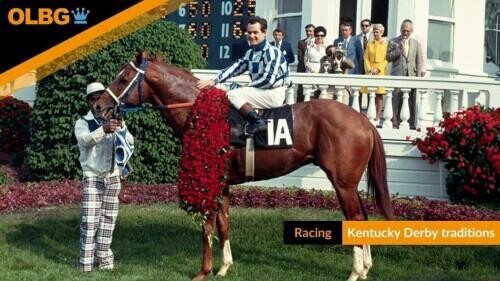Horse Racing, greyhounds and snooker specialist with thirty years experience of writing about sport across multiple platforms. A QPR and Snooker fan
Derby days are one of the most cherished days on the footballing calendar. The games are filled with passion, big challenges, and even bigger goals.
Football form and that season's form, can often go out of the window with the underdog upping their game against their superior rival.
The derby team with a stellar form record of W5, D1, L0, often comes unstuck against their near-neighbors who go into the game with a much poorer W1 D2 L4.
Finding Football Winners in derby games can be fraught, with many games very hard to call.
Below is a recent snapshot of 5 EPL derby matches, the figures include all EPL meetings both home and away games. e.g Crystal Palace v Brighton and Brighton v Crystal Palace.
| All Games Home and Away | EPL Games Played | Home Wins | Away Wins | Draws |
|---|---|---|---|---|
| Crystal Palace v Brighton | 6 | 33% | 33% | 33% |
| Everton Liverpool | 55 | 38% | 12% | 40% |
| Man City v Man Utd | 55 | 41% | 41% | 18% |
| Southampton v Bournemouth | 9 | 22.22% | 33.33% | 36% |
| Tottenham v Arsenal | 55 | 45.45% | 41.82% | 12.73% |
If we look at the EPL average for home and away games over the last 5 seasons
| All Games | EPL Games Played | Home Wins | Away Wins | Draws |
|---|---|---|---|---|
| 5 Seasons | 1900 | 45.8% | 30.4% | 23.8% |
You can see that there are often some outliers that I investigate and conclude further down this article.
Memories are formed in derby games and passed on from generation to generation often becoming legendary in time.
In terms of trying to predict the outcomes of derby matches, clichés are often spun, often with no factual form analysis to back them up.
You can read how the OLBG betting school assesses form in the how to assess football form article.
When we come to place a bet we can end up confused, and many bettors feel that these derby matches are best left alone for betting purposes.
Too Close To Call?
Some say derby games are cagey affairs, with both teams too afraid to lose to be able to really focus on winning; others say they are open, as both teams leave tactics at home and play the game according to the passion in their hearts and in the stands.
Of course in football, anything is possible, and every outcome occurs at some point, leading advocates of both of the above theories to believe that they are right, and to carry on focussing on future derbies with the same mindset.
Just this season, for example, we have seen both thoughts come to life on the pitch.
So where is the statistical proof that the fact a game is a derby even affects the outcome of the game?

Is there really a difference in the number of goals scored?
Are games really tighter, and is home team advantage elevated beyond the usual figures, due to the increased, vociferous support from the stands on these most important of days?
Well, this is what I wanted to find out:
First, all of the technical details - I didn't use all London derbies, as the importance of these is often downgraded due to their sheer volume, so instead used games from the ‘List of Local Derbies in the UK' list from Wikipedia.
There may be differences between not only the Premier League and the lower leagues of England, but also between England and other countries, however collating information on this scale would have been a tad too time consuming, as I'm sure you can understand.
Should we look at the 1X2 market differently?
Should we look at the 1X2 market differently?
The importance of derby matches can be seen by just how rare they are, with only 64 of the 1220 Premier League matches in my time-frame being classed as a derby match.
Of these 64 matches, 28 were won by the home team, 21 were drawn and 15 matches saw the away side victorious.
This gives a 1X2 percentage of 43.8:32.8:23.4, which may seem a normal spread in terms of results, with a simplified ratio of 4:3:2 in favour of the team playing at home.
But how does this compare with the overall figures for the Premier League in this time, and can this be used in order to find a new angle from which to approach these games?
| | Premier League | Derby Matches | % Increase |
|---|---|---|---|
| 1 | 45.5 | 43.8 | -3.9 |
| X | 26.5 | 32.8 | 23.7 |
| 2 | 28 | 23.4 | -16 |
In the 1220 games Premier League games played during the same time period, the 1X2 percentage is 45.5:26.5:28.
The big difference to be seen here is with the number of draws which occur - a 23.7% increase in the number of drawn games in derbies. This increase is apparently coming at the expense of the away win, which has seen a drop of 16%
A drop in the number of away wins could be expected, due to the increased level of support from the larger base of home fans, but the increase in draws is the main area of interest for me, as the percentage chance of a drawn game has risen to nearly 1/3.
Considering the bookies will rarely, if not never, offer odds of below 3.0 for a drawn game, and with that number usually fluctuating around the 3.5 mark, this gives an angle through which profit could be made in the long-term, should the trend of the last 3 and half seasons continue. A method of blindly following the draw in any ‘fierce' derby match is a process worth at least paper-testing, in my opinion.
I would also have liked to have looked into the level of cards in these games, however gathering the statistics for this would simply prove too troublesome and so the other area into which I have looked is the number of goals per game, both for the home side and the away side:
Derby matches -Goalmines or Snorefests
Of course, as has been said earlier, football is on the whole an unpredictable sport, and the same fixture could be 0-0 one season and 5-3 the next. However, by comparing goals/game ratios between derby and overall Premier League matches, a general divergence can be seen.
The 64 derby games which occurred over the last 3 and half seasons have produced 195 goals, with 107 coming for the home side and hence 88 for the visitors. This gives an average of 3.05 goals/game - a figure which is again rather useless without a comparison with the overall number of goals scored in Premier League matches during this time.
| EPL Goals | Games | Goals in Derbys | Goals/Game EPL | Goals Games in Derbys | % increase |
|---|---|---|---|---|---|
| Home | 2032 | 107 | 1.59 | 1.67 | 5.3 |
| Away | 1524 | 88 | 1.19 | 1.37 | 15.5 |
| Total | 3556 | 195 | 2.78 | 3.05 | 9.7 |
As can be seen in the table, there turns out to have been quite a large number of goals/game in derby matches over this period of time, with nearly a 10% increase in the number of goals scored per game played.
What may be more surprising, however, is the superior increase in goals scored by the away side, considering it was found in the previous section that the number of away wins was quite substantially decreased during this period.
The proposal I have for these surprising figures stems from the increased pressure placed on a home side by the fans to chase a victory or draw. In many cases, this leads to improved conversion of defeats to draws, as shown previously, but it could also lead to an increased possibility of heavy defeats being suffered by the home side.
In fact, some examples spring, quite quickly, to mind, including Man City's 6-1 win at Old Trafford in 11/12 and Newcastle's 3-0 humbling at home to Sunderland at the end of the season.
What these figures could also indicate is an increased likelihood of score draws, as this would explain how the percentage of away goals could increase so dramatically given that away wins are often being displaced by draws in these games.
So… what does all this mean?
So what conclusions can be drawn, and where should out minds be when looking at derby games? It is worth pointing out, first of all, that a sample can never be too large, and it may be that over a longer period of time the statistics converge.
Looking at the findings from the last few seasons, however, it seems evident that draws are fairly likely in derby games, much more so that in regular league fixtures, meaning a draw is usually going to be a good value bet in these kinds of games.
The increased number of goals scored by away sides, as well as in general, makes this punter look towards both the correct-score and Asian Handicap markets for an increased chance of big winners.
High-score-draws are likely to offer the most value here, with 2-2 and 3-3 suggested value bets, although there also seems to be good value in backing large away wins.
Of course, backing large wins makes the correct score market a bit problematic, as there are far more options than with draws, however, the AH market could be used in order to back teams from between -1.5 to -2.75 or even further for the braver gamblers.
From the data that was found the following bets would be suggested for derby matches in general:
1X2: Draw - which could be combined with BTTS for added value
Correct score predictions of 2-2 or 3-3
Asian Handicaps of -1.5 and below for the away side
No Comments
There are no comments here. Be the first to comment...
Keep Reading
6 popular Kentucky Derby traditions, explained

OLBG compiled and discovered the history behind some of the Kentucky Derby's most popular annual traditions using a variety of online sources.
Continue Reading10 Highly Anticipated Shows to Satisfy Every Type of Reality TV Fan

Using information from news reports, OLBG has created a list of 10 of the most highly anticipated reality TV shows premiering in 2024.
Continue ReadingStuart Pearce Interview with OLBG

Stuart Pearce exclusive interview: West Ham need to be careful what they wish for in Ruben Amorim talks, Arsenal have big advantage over Manchester City in title-race, Nottingham Forest statement is dangerous
Continue Reading
